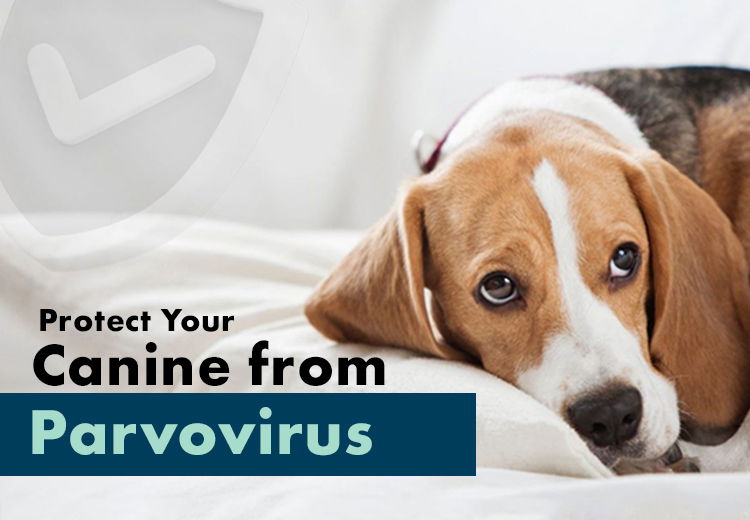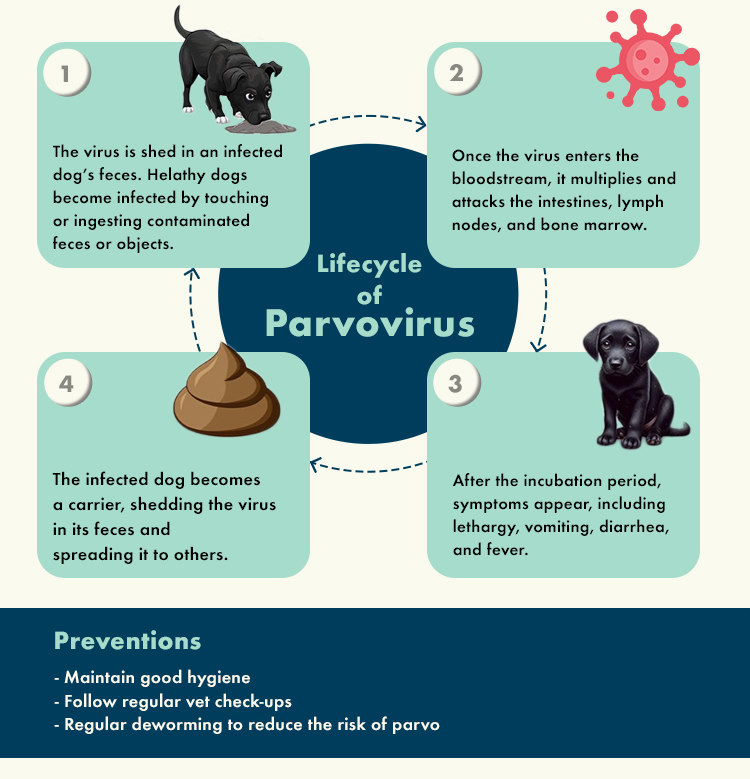 Nov 04, 2024
Nov 04, 2024

Dogs are more than just pets; they are our best friends, loyal companions, and part of the family. Unfortunately, our canine companions also face several health issues that as responsible parents we need to be aware of. Canine Parvovirus is one such threat that can strike, especially in puppies and dogs that aren’t fully vaccinated.
In this blog, we will understand everything about Parvovirus in dogs to help protect our beloved dogs and ensure they stay healthy and happy.
Let’s begin!
Parvovirus, also known as Canine Parvovirus (CPV) or Parvo, is a highly contagious virus that affects puppies, unvaccinated dogs, or dogs with poor immunity. Caused by the canine parvovirus type 2 (CPV-2), it was first identified in the 1970s. Its variants include CPV-2a, CPV-2b, and CPV-2c. Among these, CPV-2 and CPV-2c are known to be the most dangerous.
The virus affects the lymph nodes and then spreads into the bloodstream. It targets the bone marrow and the lining of the intestines. In young dogs, it can also affect the heart, which can lead to heart problems.
Symptoms of parvovirus typically appear within three to seven days after infection.
Early signs include:
As the infection gets worse, you might notice:
In very sick puppies, symptoms can be more severe and may include:

The main cause of parvovirus infection is exposure to the virus. This virus can survive for a long time in the environment. Puppies are especially at risk if they are not fully vaccinated. Canine parvovirus spreads in several ways, the common ways include:
Veterinarians commonly use the fecal ELISA (enzyme-linked immunosorbent assay) to diagnose the condition. However, at times, this test can yield inaccurate results, so veterinarians may need to conduct additional tests to confirm the illness.
Some veterinarians consider PCR (polymerase chain reaction) test as more accurate. This test detects the viral DNA in the stool.
Vets may also check the dog’s white blood cell count. If a dog has a positive ELISA test and a low white blood cell count, it strongly suggests they have parvovirus.
Proper treatment can help prevent further complications caused by the virus. Here is the possible line of treatment the vet may recommend:
Many dogs respond well to treatment if it begins early, and recovering dogs often develop lifelong immunity to the virus.
Here are some preventative measures to protect your dog from parvovirus:
Frequently Asked Questions
Q. What is parvovirus, and how does it affect dogs?
Parvovirus is a highly contagious virus that mainly affects puppies and unvaccinated dogs, causing severe health complications including vomiting, diarrhea, and dehydration.
Q. How my dog can get parvovirus?
Dogs can get parvovirus by coming into contact with infected feces, contaminated surfaces, or other infected dogs.
Q. What are the signs of parvovirus?
Common signs include vomiting, bloody diarrhea, lethargy, loss of appetite, and fever.
Q. How can I protect my dog from parvovirus?
Ensure your dog is fully vaccinated and avoid places where many unvaccinated dogs gather.
Final Words
Parvovirus can pose a serious threat to your dogs. It is important to understand the fundamentals of this infectious virus to help your dog stay protected. Proper hygiene and regular vaccination can help prevent the spread of this virus and ensure your dog’s health and happiness.
 Oct 24, 2024
Oct 24, 2024
Cats are little aloof fur balls that like to stroll around and enjoy their own company. But that doesn’t mean they are safe from pesk...
 Oct 10, 2024
Oct 10, 2024
Halloween is the perfect time of the year to bring out your freak and share it with your loved ones. Sweets, snacks, and drinks are the obv...